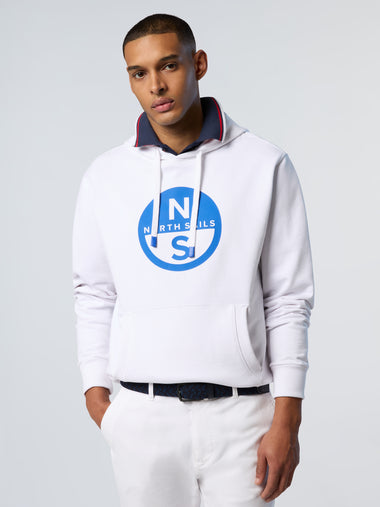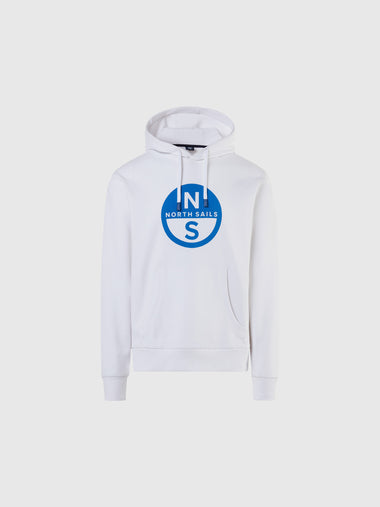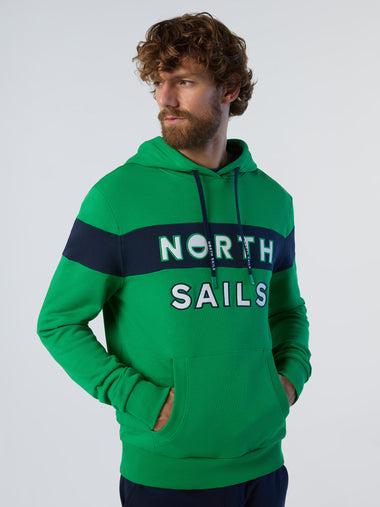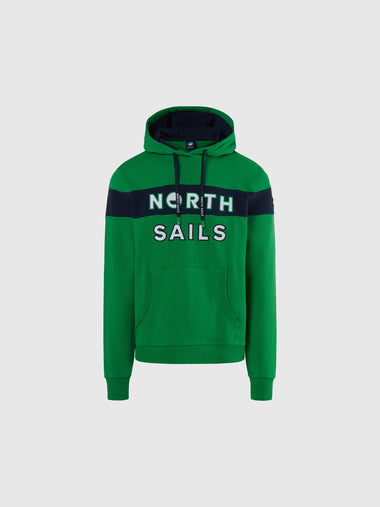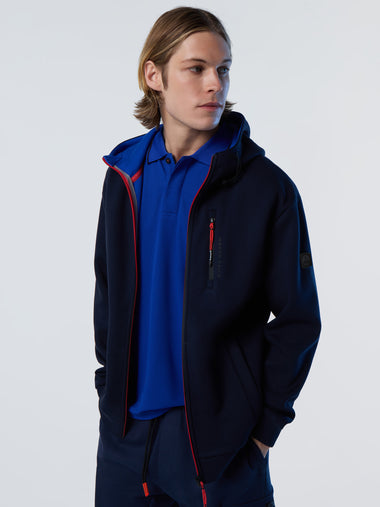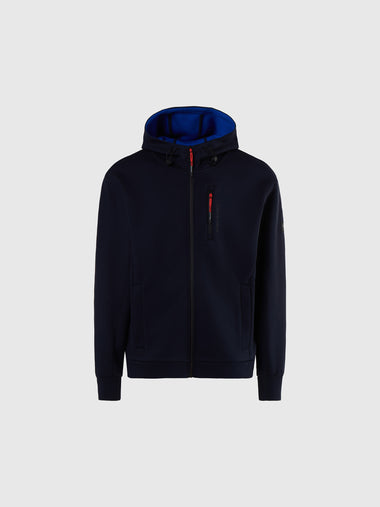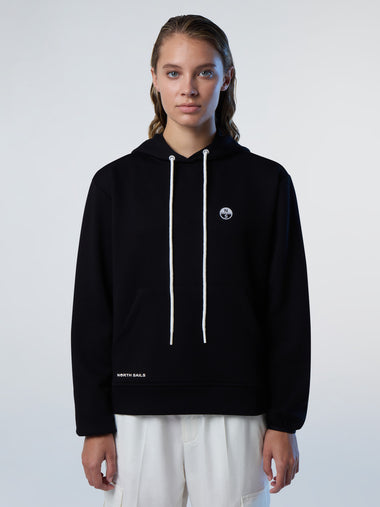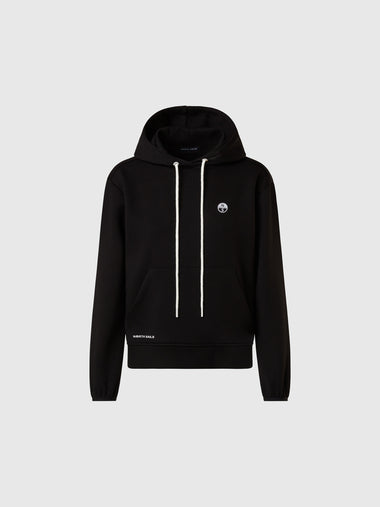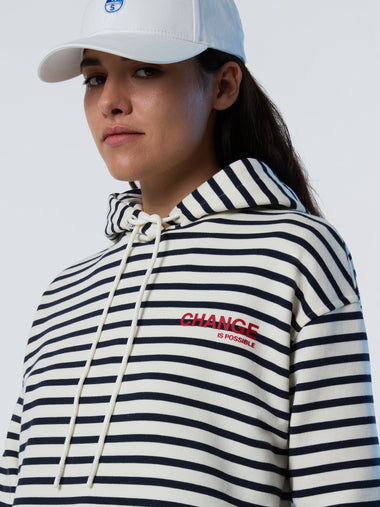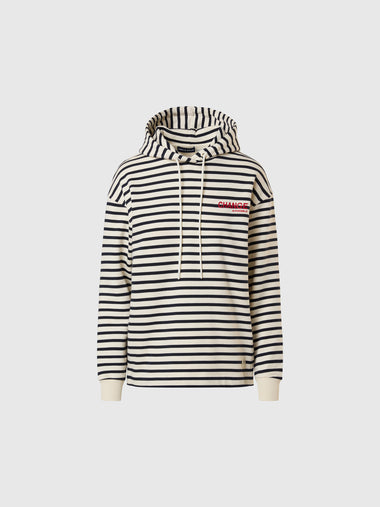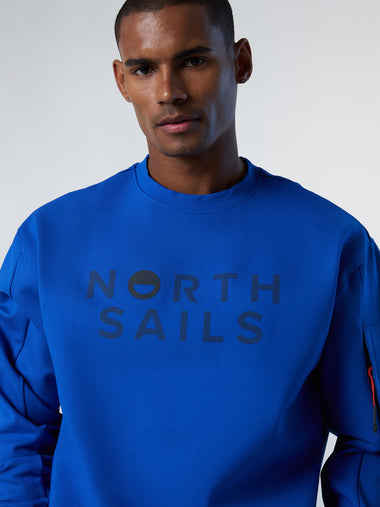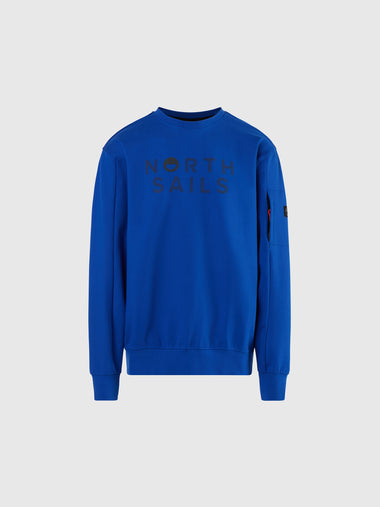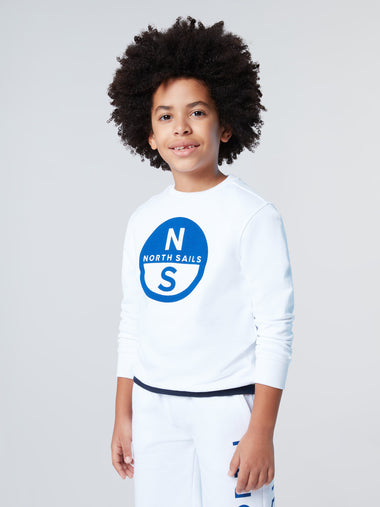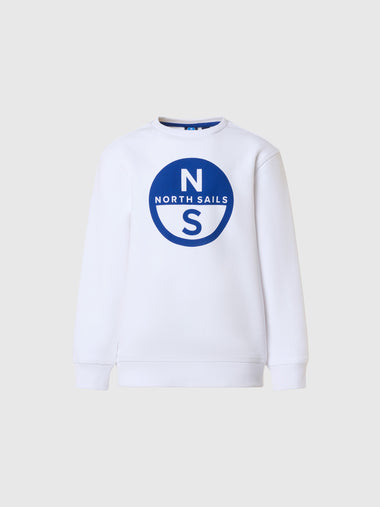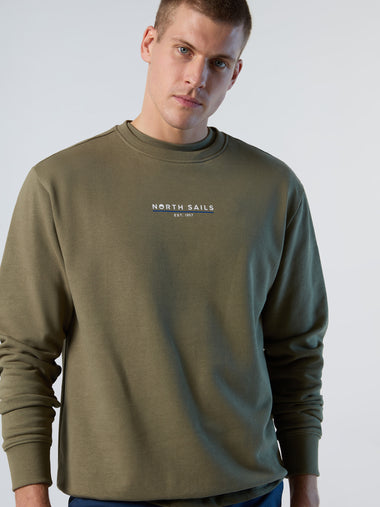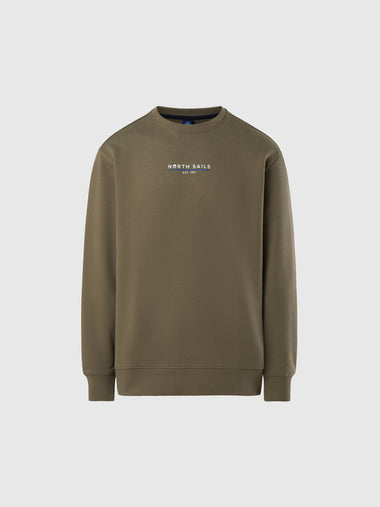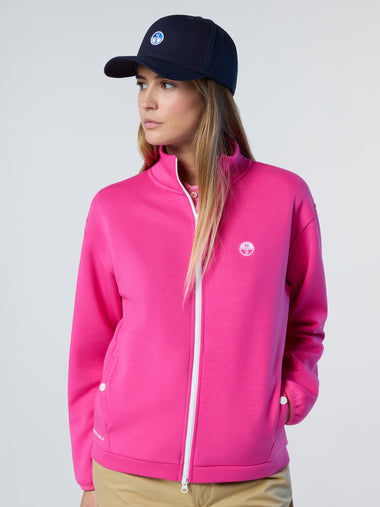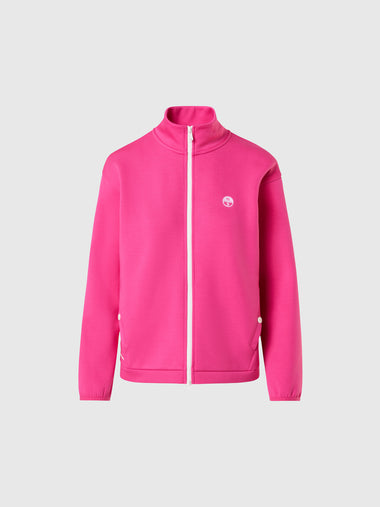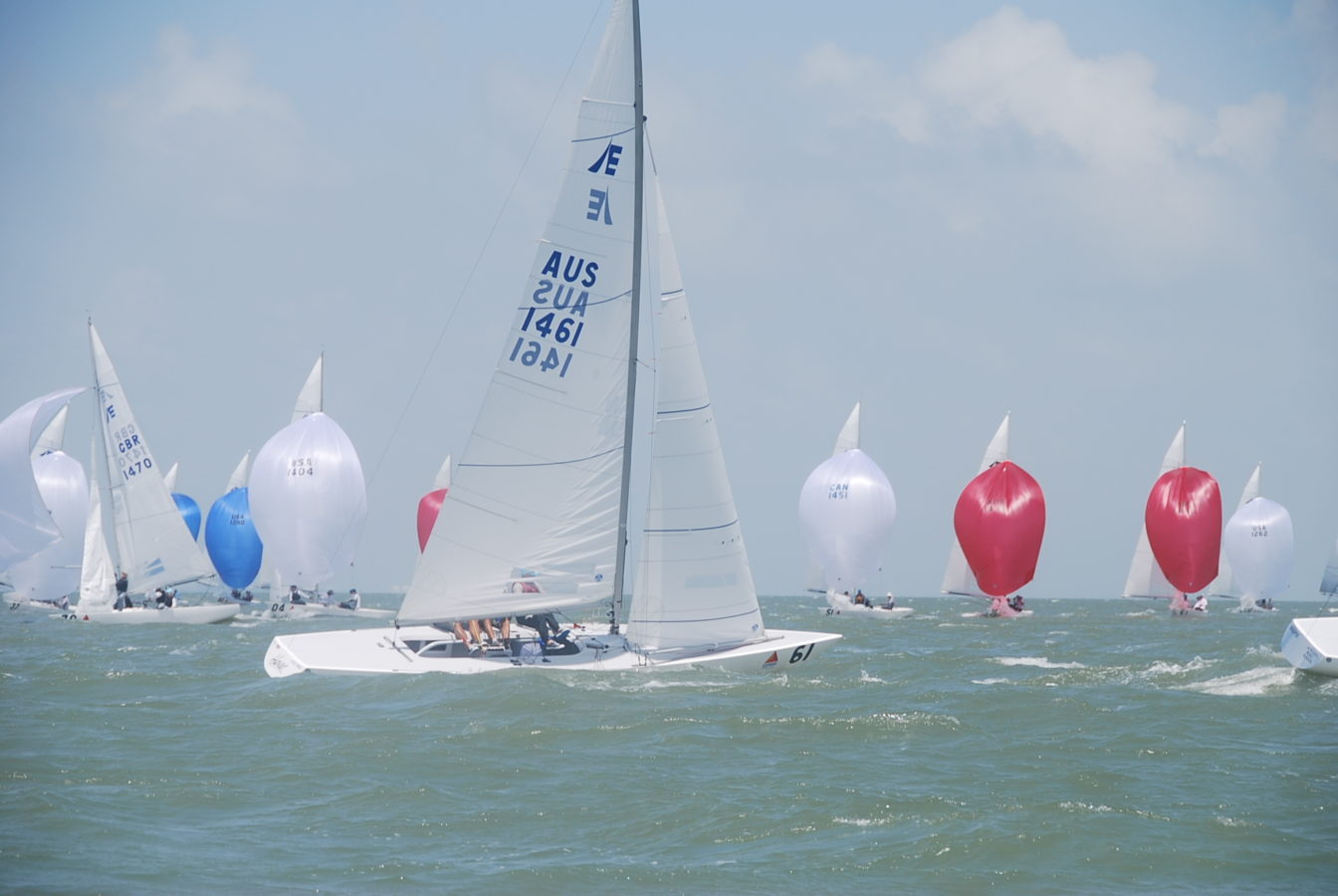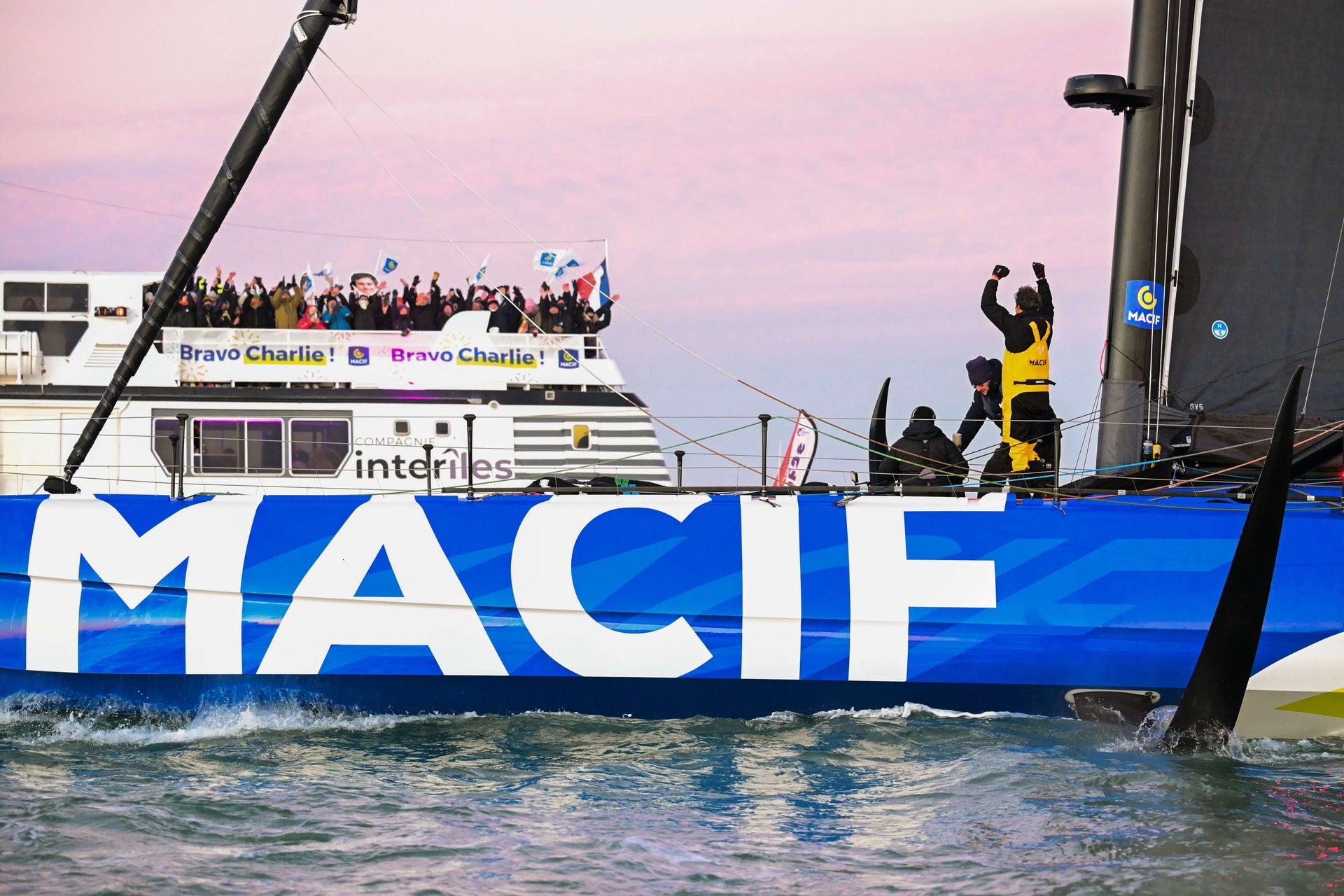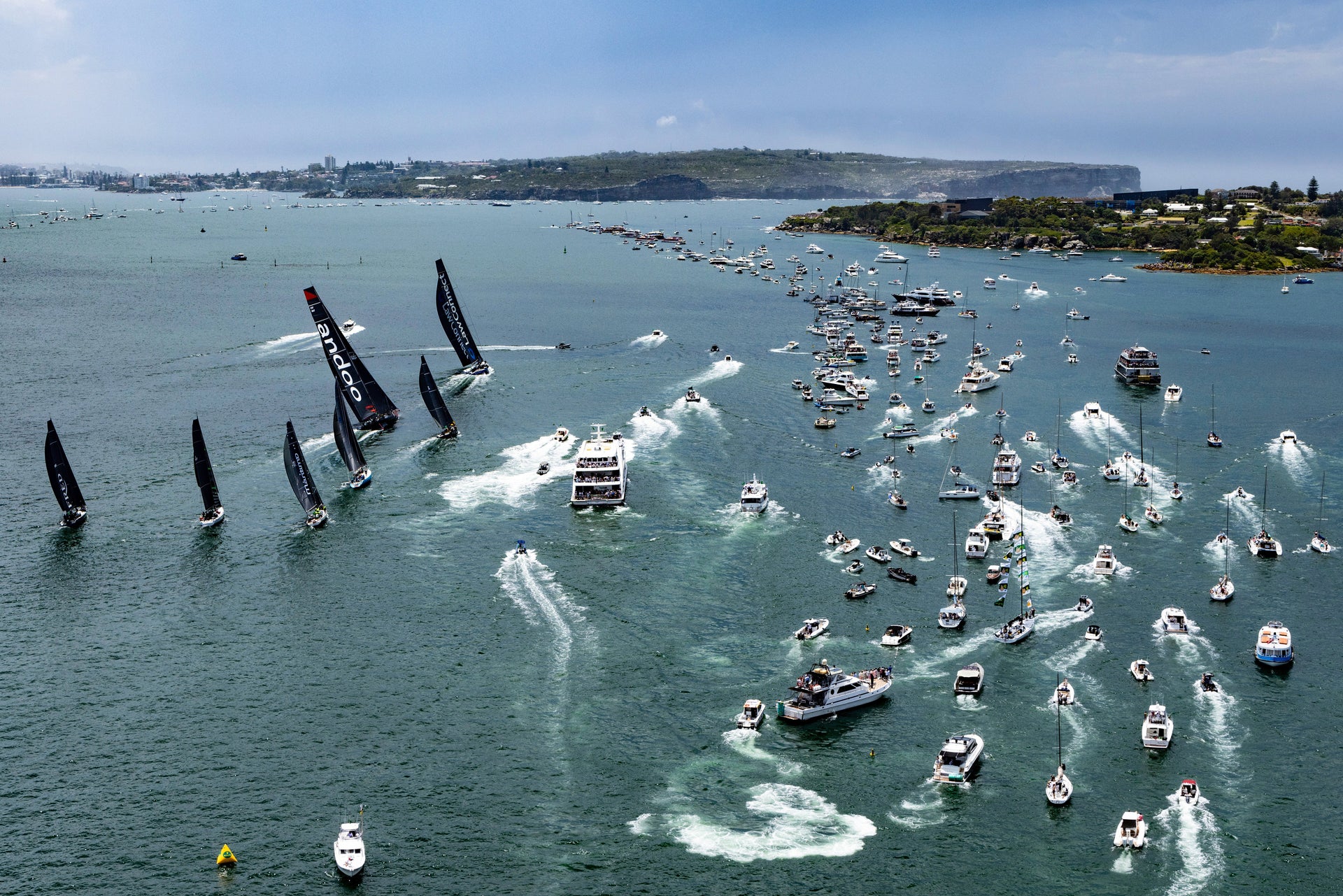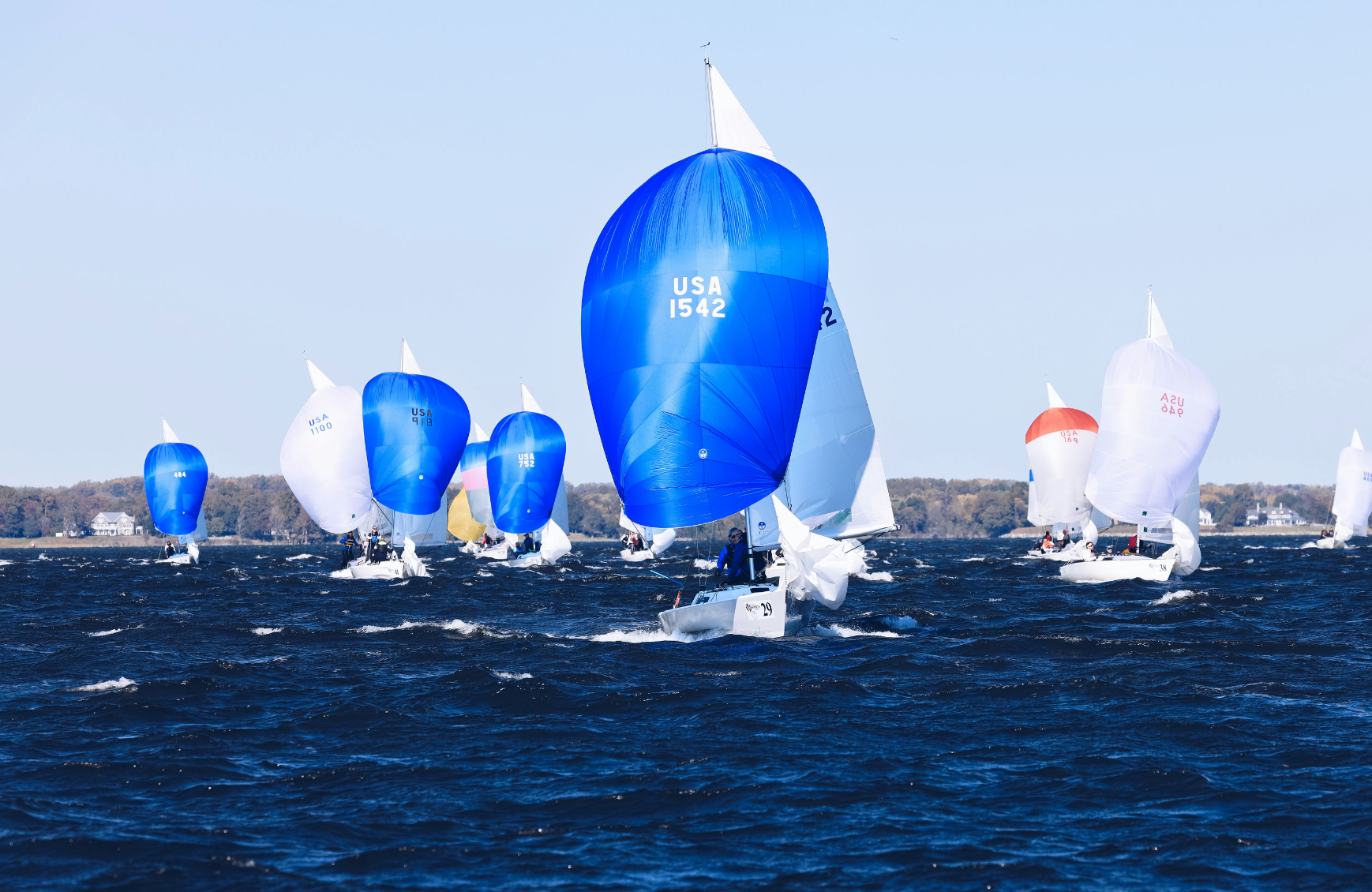ETCHELLS WORLDS: THE AUSTRALIANS' SECRETS
ETCHELLS WORLDS: THE AUSTRALIANS’ SECRETS
Interview with winners Iain Murray and Richard Allanson
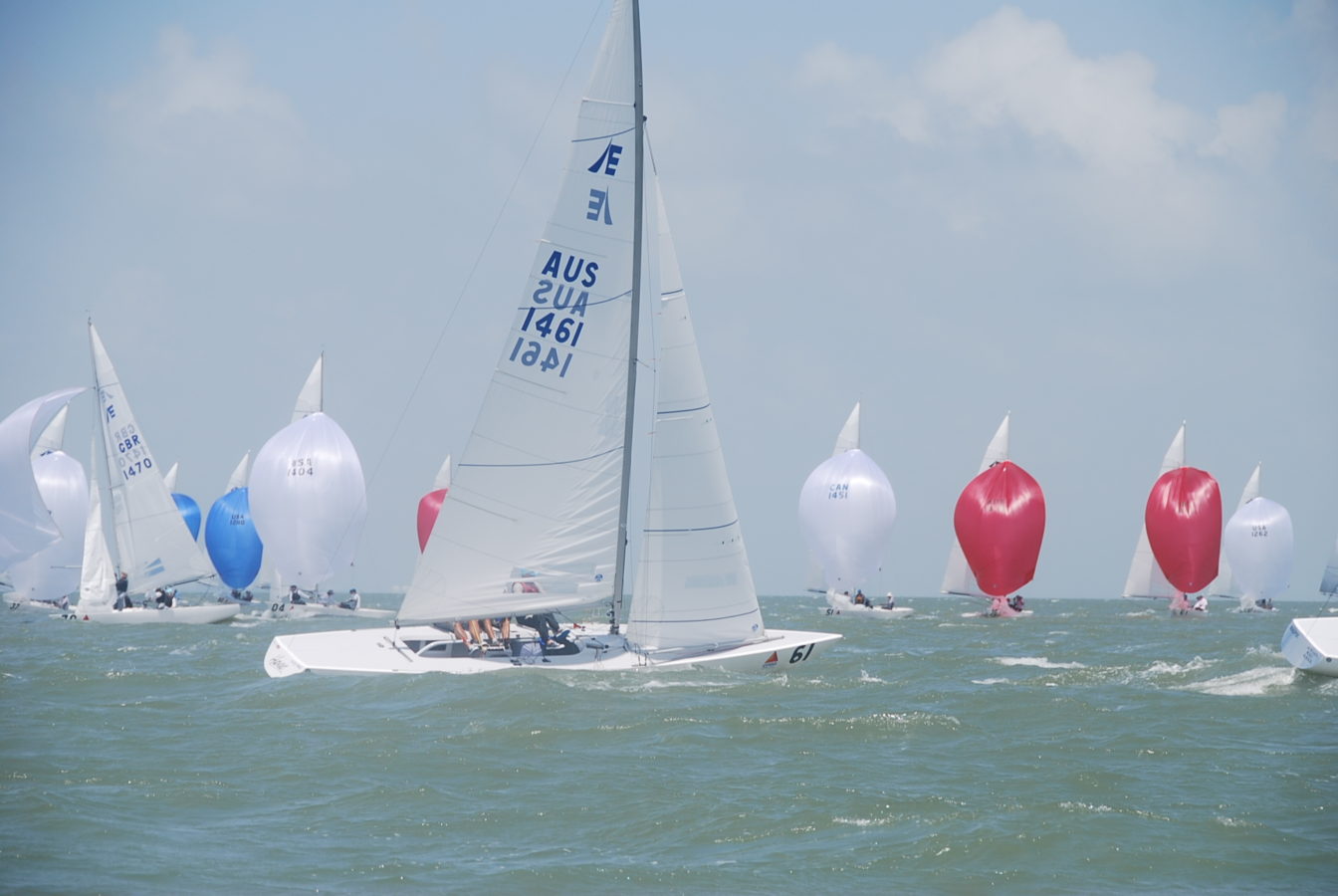
After a brilliant regatta at the Etchells Worlds in Corpus Christi, Texas, we were curious to know what was special for the Australians to give them such an advantage on the race course winning 7 out of the total 9 races. North expert Noel “Nitro” Drennan had a chance to catch up with Iain Murray and Richard Allanson and here are their secrets:
It was very impressive to see how you handled the regatta. It appeared to me that the boat was ready to win from the day it got there. Could you expand on the development of the boat, from its launch and the lead up to the Worlds?
Iain – It has been a sort of a longer term project. It really started out with the Worlds in Brisbane. We had a brand new boat for Brisbane and, unfortunately, we hadn’t quite finished getting ready for that regatta. We addressed the things that weren’t right and did a lot of campaigning in Australia, working on the full range of conditions that the boat might have to sail in across the board.
Knowing that the boat had to arrive in Corpus Christi ready to race , we locked in what we wanted to do in terms of sails and rigs and set up a long time before. One area we got a little bit caught out was the chop and the amount of water on board, and a revision to the bilge pump system was necessary to cope with Corpus Christi.
The mast had a slightly different set up than the standard and no fitting looked like it hadn’t been looked at, from the mast, the hull and the sails….
Iain – That’s the kind of operating procedure within this group – we just want to do the very best that we can. When we start a project, we start with a clean sheet of paper and go down through the boat. First, the weight. We questioned every single piece of the boat, whether it be the spinnaker pole, how the topping lift is attached, the end fittings on the pole, the diameters of the pole, the boom, how the block and tackle system works with the outhaul. Every single part and every single fitting in the boat has been scrutinized.
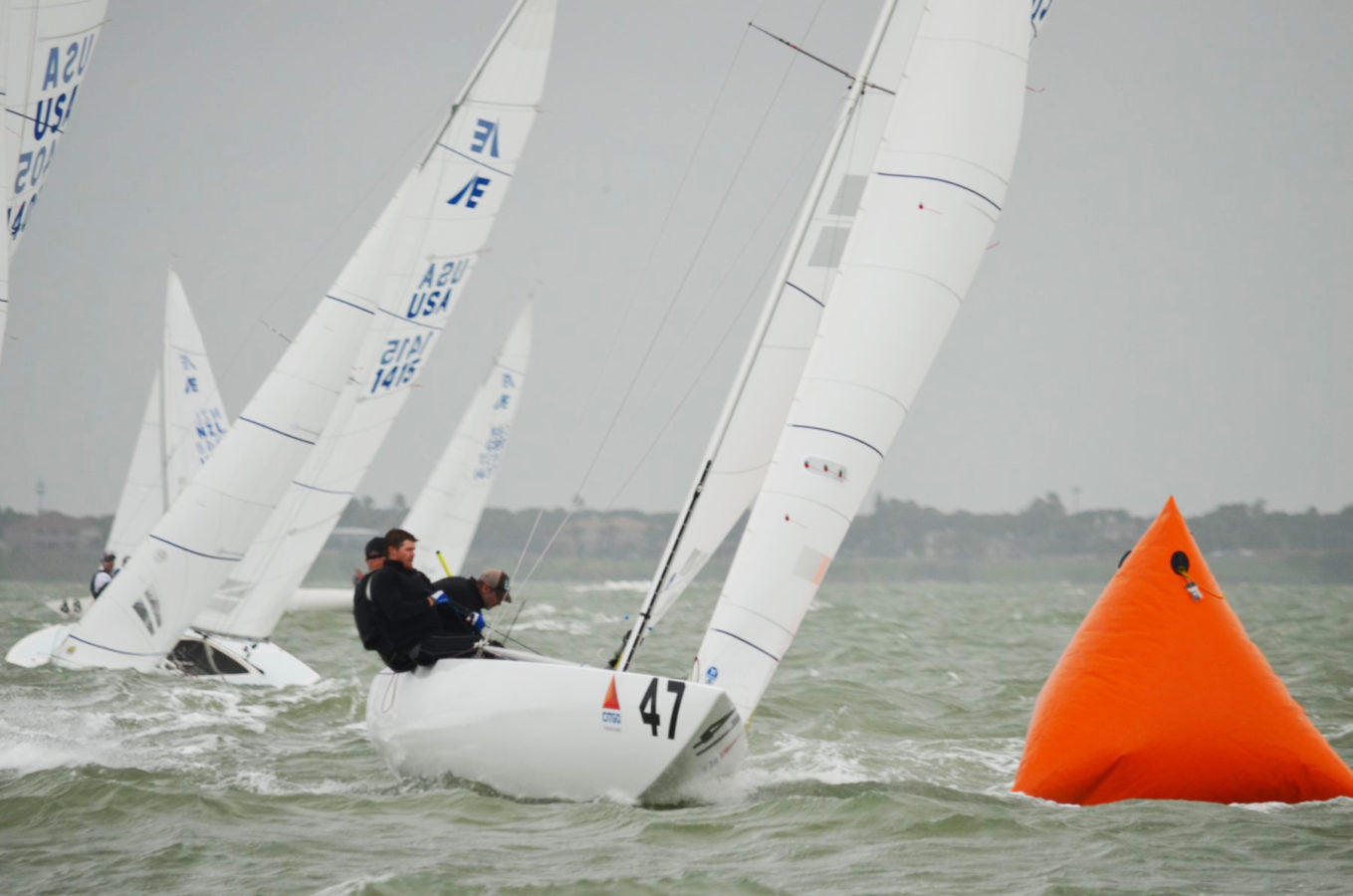
The two-boat tuning aspect of your campaign was really evident that it was a big part of your success.
Richie – The two boat is a pretty unique opportunity to have. Essentially we had one team with two boats and it was an open book between the two. The boats were identical in terms of the set up, the hulls, the rigs, the sails and it allowed us to validate a lot of things that in particular Iain wanted to have in place. Iain has been quoted as someone that thinks in color rather than the black and white.
All the subtleties of these boats is one of the great things about sailing. It never ceases to amaze me how one turn on the lowers can make such a big difference to the performance of the boat. We looked at Magpie’s rake and mast step position and they were subtly out by not a huge amount. We put them back to where we believe they should be and it made an astonishing difference. All of a sudden they were comfortable. It’s really cool that you can adjust two things on the boat, the rake and the mast step, and make a significant difference to the performance.
With the two boats it allowed us to validate a lot of ideas that he wanted to try, in particular the rig set up. A lot of people that said they tried that 20 years ago and with the greatest respect to those people, they were dismissed pretty quickly because they weren’t open minded to seeing these things through. There’s been subtle changes in materials and techniques that have allowed us to pursue these things fully.
When we look at the set up of the Havoc and Magpie we notice headsails are deeper cambers than I’ve ever seen and in-hauled more than been seen previously. It definitely was working with impressive performance speed and height. Have you in hauled the entire time of the boat set up or is it just something that got developed?
Iain – No, it was part of the concept of building the boat. The boat was built to evolve and the sails were built to evolve, and the selection of the sails and going back to older sail designs as a base is all part of in-hauling. It’s a trend that we’ve seen in a lot of classes, whether McConaghy 38, or TP52 or Farr 40 or whatever. But we wanted to test that. But to do that you have to have a boat that will do it and the secret, as you say, there’s fuller jibs, they’re in further, they pulled on hard. There’s no free lunch in sailing and when you start doing things like that, it’s gotta be compensated for in other areas. Keeping all that in check and balance is the key to making that work.

You had a WHALE spar mast with slight modifications and they looked impressive finish detailing. My understanding is the mast was close to minimum tip weight which is quite unique for the Etchells class.
Iain – Yeah, as I said at the beginning, every part of the boat was scrutinized for weight and the mast was no different to the boom, to the spinnaker pole, to the bilge pump system, to everything in the boat. We had a spreadsheet and targets through every part of the boat. Since the Brisbane Worlds we have posted a bigger emphasis on all that sort of thing. Then, while some people have been chasing adjustability with spreaders and all sorts of things, we’ve kept it pretty simple, wanting to minimize what we actually got up there in the air. We focused on stiffness for weight.
With the next Worlds being in Perth we are expecting a strong fleet. After the success of your campaign this year it is evident that the fleet will have to step up their game and get better at two-boat programs to improve their boat speed. If you want to stay ahead of the game, what’s next for you?
Iain – We’ve got the boat to a very good place. Having a consistent team on the boat, learning how to sail, tweak here and tweak there, making some of the systems a little more finessed in terms of user adjustment and, the way we do the actions. Sailing the boat particularly in choppy conditions, there’s a lot of things that you have to adjust. On the mainsheet hand you got the backstay, traveler, outhaul, fine tune, plus hiking etc. You only have two hands, getting the rig to be more automated through that is an area of future focus for us.

Iain, you were a governor in the Etchells class. Do you see a bright future for the class?
Iain – At its core there’s a lot of very devoted strong people and, and the governance of the class is in a really good place. Having the class stable and having it very clear what the rules are and where the governors are going with them is important to the class. As a class, we need to tidy up some things that are not threats to people’s future in the class. Certainly the youth of the class, which we’ve seen with the youth teams in Corpus Christi whether they’d be American, or all the Australian youth teams that are emerging, or the English youth teams, is a really important thing. We heard continuously in Corpus Christi, we need to flow on into Europe, get an event in Holland maybe as a starting place.
You look at classes like the Dragon class where there’s big numbers. We need to be very aware of the venues that we go to. When someone comes to a championship, they want to have fun and they’re spending considerable amounts of money and it’s a big parcel of time for them. We need venues where people have fun and it’s enjoyable to sail. Also, the way the races were organized is important. In Corpus Christi Mark Foster did a really good job of not having us out there for eight or nine hours a day.
All those things that make the experience for the owner and the crews are important. The people in the class, they all want to do well and they all want to have fun and they all want to be competitive. The governors have to work through boats, venues, championships,etc. Looking at Corpus Christi with 37 boats, when there’s probably another 50 boats sitting in Miami. There’s a lesson there.

With the Worlds coming to Perth, the Sydney fleet will have a very competitive season coming up.
Richie – The future is bright for the class. It’s in a good place. We need to keep this balance. We need to recognize that the majority of the fleet are people just want to want to compete. I think about managing expectations. People might say, “I want to win this world championship”. There are probably, at every regatta, 10 former world champions that are competing. You will be racing against the best in the world, whether they’d be America’s Cup sailors, world champions or Olympic medalists. That’s one of the big attractions and the Sydney fleet enjoy having those sorts of people competing. There’s a mix of people that enjoy beating John Bertrand to the top mark. Because of that, the Sydney fleet has grown to a point where people want to come and race against the previous World Champions, America’s Cup sailors etc.
Iain – I wouldn’t underestimate what Richie is doing within the Sydney fleet. Because he is there at the club, providing all of the information and communication about their campaigns and what they need to do next.
I agree. Thanks Richie, thanks Iain. And once again, congratulations to the two of you and Colin Beashel. It was a very impressive effort from the get go. It was a pleasure to watch.
Iain – Yeah, thanks. We haven’t really spoken about Colin’s input into this, but that’s not to be underestimated. His experience as a six-time Olympian and two World Championships as a skipper is amazing. And, to have another skipper alongside you, feeling the controls, understanding the helm, the balance and all the tricky things that we’re trying to take to another level in this boat.


